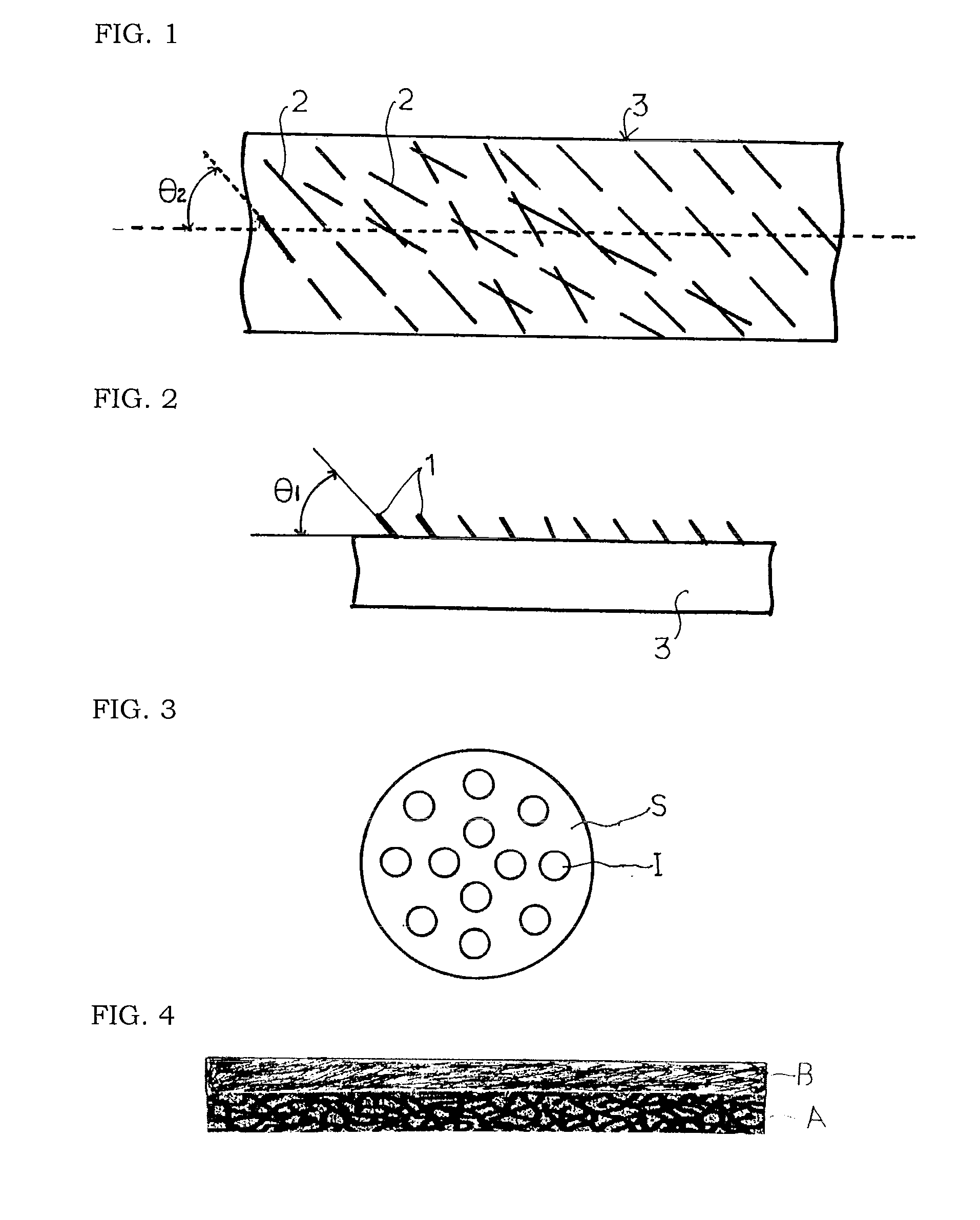Polishing pad and method of manufacturing the same
a technology of polishing pad and surface, which is applied in the field of polishing pad, can solve the problems of not allowing the magnetic head to fly properly, damage to the surface of the magnetic disk, and malfunction of reading and writing information, etc., and achieves excellent polishing performance, low occurrence of scratches, and favorable surface uniformity.
- Summary
- Abstract
- Description
- Claims
- Application Information
AI Technical Summary
Benefits of technology
Problems solved by technology
Method used
Image
Examples
example 2
[0115]A polishing pad was produced by the same procedure as in Example 1 except that the non-woven fabric prepared in Example 1 was firstly treated using an alkaline solution to extract a sea component S from the composite fiber and impregnated with 40% by weight of polyurethane resin relative to total weight of the fabric, followed by a wet coagulation method. Using the produced polishing pad, a silicon wafer with an area of 100 inch2 was polished by the same process as in Example 1.
[0116]Among the total amount of ultrafine fibers arranged on the surface of the polishing pad, the ratio of ultrafine fibers having an orientation angle θ2 in a range of 0 to 30° was determined. The results are shown in TABLE 1.
[0117]The polished silicon wafer was subjected to measurement of average surface roughness and scratch occurrence. The results are shown in TABLE 1.
example 3
[0124]An elution type composite fiber (a monofilament fineness for the polyamide fiber component: 0.05 denier) comprising an eluted component based on polyester copolymer, which reacts to divide a cross-section of a yarn into 32 segments, and a polyamide fiber component, which is divided by a slit component in the eluted component and has a cross-section in a triangle form, was cut into staple fibers having a length of 50 mm. After carding and cross-lapper processing, the treated staple fibers were formed into a laminate web. The laminate web was subjected to needling punching, resulting in a non-woven fabric made of the elution type composite fiber.
[0125]Next, the produced fabric was impregnated with 40% by weight of polyurethane resin relative to total weight of the fabric, then, treated by a wet coagulation method. The coagulated fabric was treated using an alkaline solution (such as sodium hydroxide) to obtain the eluted component from the composite fiber, followed by a fiber ra...
example 4
[0130]A split type composite fiber comprising polyester based radial components, which have a cross-section divided into segments by slit components, was cut into staple fibers having a length of 50 mm. After carding and cross-lapper processing, the treated staple fibers were formed into a laminate web. The laminate web was subjected to a needle punching process, resulting in a non-woven fabric made of the split type composite fiber.
[0131]Next, the produced fabric was impregnated with 40% by weight of polyurethane resin relative to total weight of the fabric, then, treated by a wet coagulation method. The coagulated fabric was treated using an alkaline solution (such as sodium hydroxide) to obtain an eluted component from the composite fiber, followed by a fiber raising treatment such that ultrafine fibers were raised on a surface of the fabric to produce a sheet type product comprising the non-woven fabric made of ultrafine fibers and impregnated with elastomeric polymer.
[0132]Afte...
PUM
| Property | Measurement | Unit |
|---|---|---|
| orientation angle θ2 | aaaaa | aaaaa |
| orientation angle | aaaaa | aaaaa |
| orientation angle θ2 | aaaaa | aaaaa |
Abstract
Description
Claims
Application Information
 Login to View More
Login to View More - R&D
- Intellectual Property
- Life Sciences
- Materials
- Tech Scout
- Unparalleled Data Quality
- Higher Quality Content
- 60% Fewer Hallucinations
Browse by: Latest US Patents, China's latest patents, Technical Efficacy Thesaurus, Application Domain, Technology Topic, Popular Technical Reports.
© 2025 PatSnap. All rights reserved.Legal|Privacy policy|Modern Slavery Act Transparency Statement|Sitemap|About US| Contact US: help@patsnap.com

